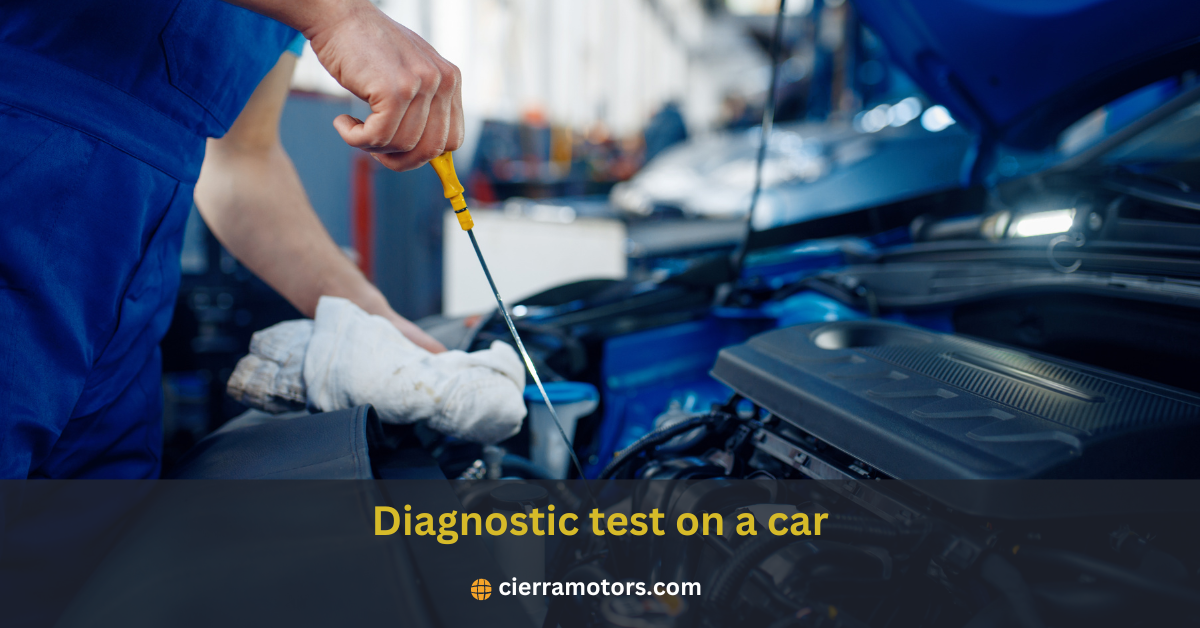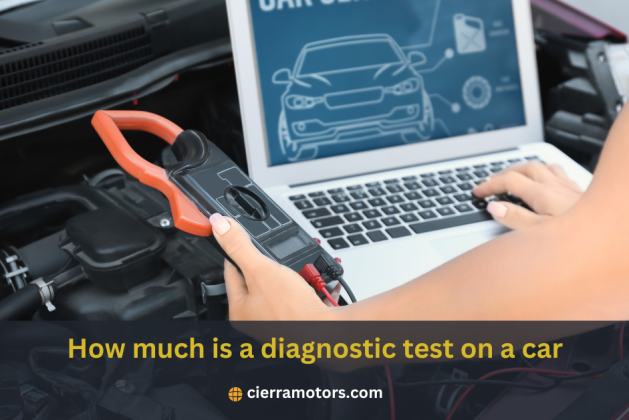When that dreaded check engine light comes on, the panic mode can set in for many car owners. After the initial wave of anxiety passes, one of the biggest questions on your mind is likely, “How much is this going to cost me?”
In this detailed exploration, we’ll discuss not only the average cost of diagnostic tests but also why they are essential for every car owner and strategies to save on these crucial assessments.
The Importance of Diagnostic Tests in Car Maintenance
A diagnostic test is the automotive equivalent of a medical check-up. It involves using specialized tools and equipment to communicate with your vehicle’s onboard computer system. This establishes a baseline for proper vehicle functionality and detects any abnormalities. With the increasing complexity of modern car systems, diagnostic tests have become even more vital for accurate issue identification.
Understanding the Check Engine Light
Modern vehicles, like the Toyota Camry, utilize a standardized electronic system called OBD-II (Onboard Diagnostics II) to alert drivers to potential problems. The check engine light is part of this system. Ignoring the light can lead to severe issues and even cause more damage that could have been prevented with prompt attention.
Cost Factors of Diagnostic Tests
Several factors can influence the cost of a diagnostic test, and understanding them can help demystify repair bills.

Skilled technicians use their expertise to interpret diagnostic codes, conduct tests, and troubleshoot issues.
Labor Charges
Some shops charge a flat rate for diagnostics, while others bill by the hour. Hourly rates can vary widely depending on the shop and location, so this is a significant variable in cost considerations.
Typically, a diagnostic test takes around an hour to complete, and the average labor rate for mechanics ranges from $80 to $150 per hour. This means that a diagnostic test could cost anywhere from $80 to $150.
Complexity of the Issue
The time it takes to diagnose a problem can vary significantly, ranging from a quick 30 minutes to several hours. For instance, a simple issue such as a loose gas cap can be resolved swiftly with minimal time investment.
On the other hand, when dealing with more intricate problems, extensive testing procedures may be necessary, along with the expertise of seasoned technicians to accurately pinpoint and address the issue at hand.
Equipment and Technology Used
Diagnosing modern cars involves the utilization of sophisticated scanning tools and specialized software. These tools require frequent updates to ensure their accuracy in detecting and resolving automotive issues effectively. The financial investment in this cutting-edge technology is often evident in the pricing of diagnostic tests for vehicles.
Location
Diagnostic test costs can vary significantly depending on the region. In urban areas, the overhead costs tend to be higher, resulting in elevated diagnostic pricing. Conversely, rural or less populated areas may provide more competitive rates due to lower operating expenses and potentially different market dynamics. For instance, a diagnostic test in New York City may cost significantly more than the same service in a smaller town in Kansas.
Individuals need to consider these regional differences when seeking diagnostic services to make informed decisions about their healthcare expenditures.
Benefits of Diagnostic Tests
While the upfront cost can deter some, the long-term benefits of diagnostic tests outweigh the price tag for several reasons.
Early Issue Detection
Detecting a problem before it escalates into a major repair can save you from unexpected breakdowns while driving, preventing costly repairs and inconveniences. Through a comprehensive diagnostic test, potential issues that may not be apparent to the driver can be identified, providing reassurance that your vehicle is well-maintained and ensuring a smooth driving experience.
Preventive Maintenance
Addressing issues early in your vehicle can have a significant impact on extending its lifespan. By incorporating regular diagnostic tests as a fundamental component of your comprehensive maintenance plan, you ensure that your car operates efficiently and safely and proactively identify and mitigate potential problems before they escalate, ultimately saving you time and money in the long run.
Cost Savings in the Long Run
Yes, while diagnostic tests may initially seem like an added expense, they can prove to be a wise investment in the long run. By proactively identifying and addressing minor issues early on, you not only avoid the need for costly significant repairs but also ensure the longevity and efficiency of your systems or equipment.
Taking the time and resources to conduct these tests can lead to significant savings by preventing potential breakdowns and maintaining optimal performance over time.
Comparison with DIY Diagnostic Tools
With the rise of technology, many car owners now have the power to perform basic diagnostic tests at home. DIY tools connect to your vehicle’s OBD-II port and provide you with the error codes that would otherwise only be accessible in a mechanic’s shop.
Pros and Cons
The significant advantages of DIY tools are cost savings and convenience. They can range from smartphone apps to dedicated handheld readers that are affordable and easy to use. However, they need a more comprehensive range of diagnostics they can perform compared to professional-grade equipment.
Accuracy and Reliability
While DIY tools have advanced significantly, professional mechanics opt for high-end scanners for a reason. These scanners provide in-depth diagnostics, detecting intricate issues essential DIY tools could overlook. For instance, a high-end scanner might reveal specific error codes related to a vehicle’s advanced systems, guiding mechanics to pinpoint the exact problem efficiently.
Average Costs in the Industry
The industry average for a diagnostic test typically falls within the range of $80 to $120. However, it’s important to note that this cost can fluctuate significantly depending on various factors that we have previously explored and outlined.
Price Ranges for Common Diagnostic Tests
Standard tests like a check engine light diagnostic can be on the lower end of the spectrum. However, testing for more specific systems, like airbags or anti-lock brake systems, could be higher due to the complexity of the additional equipment and software required.
Tips for Saving on Diagnostic Tests
Here are some tips to help you manage the cost of diagnostic tests:
Regular Maintenance
Staying on top of your vehicle’s regular maintenance schedule is crucial for preventing issues that may necessitate diagnostic testing. This involves tasks such as changing fluids like oil, coolant, and brake fluid, replacing filters such as air, oil, and fuel filters, checking tire pressure and tread depth, inspecting belts and hoses for wear, and ensuring all lights are operational.
By staying proactive with these routine checks, you can help maintain your vehicle’s optimal performance and longevity.
Seeking Multiple Quotes
Just like any service, shopping around for diagnostic test prices can save you money. Feel free to call a few places and ask for their diagnostic fee to find the best deal.
Understanding Your Vehicle’s Needs
If you’re experiencing a recurring issue with your vehicle and have a clue of what might be causing it, you can effectively communicate your insights to the mechanic. This proactive step can streamline the diagnostic process, potentially leading to quicker solutions and helping you save on labor charges in the long run.
Real-world Costs and Scenarios
Case Study 1:
A 2015 Honda Accord owner shared their experience where the cost of a check engine light diagnosis varied significantly from $50 to $90 at different repair shops. Seeking multiple quotes allowed them to save 40% on the expense.
Case Study 2:
For a 2018 Toyota Camry, the cost of a transmission diagnostic test ranged from $100 to $300. This case study highlights the significant difference in pricing based on the shop’s assessment of the complexity of the issue.
Case Study 3:
An auto enthusiast purchasing a professional-grade DIY tool for a 2010 Ford Mustang cost them $200 initially. However, the tool proved to be cost-effective, enabling them to perform multiple diagnostics and save on future mechanic visits.
Conclusion
Diagnosing your car’s issues through professional or DIY diagnostics is an investment in your vehicle’s health and peace of mind. While the costs can vary, the benefits of early detection, preventive maintenance, and potential long-term savings make it a crucial aspect of vehicle ownership.
Car diagnostics may not be something we look forward to, much like a dentist appointment or annual physical, but they’re necessary for understanding and maintaining the health of our cars. By appreciating the value they add and being savvy about the costs involved, you can keep your transportation running smoothly, affordably, and without unwelcome surprises.
FAQs
Q. Where can I get a diagnostic test?
A. You can get a diagnostic test at most automotive repair shops, dealerships, and some parts stores.
Q. How long does a diagnostic test usually take?
A. A diagnostic test typically takes anywhere from 30 minutes to an hour, depending on the issue’s complexity.
Q. Can I drive my car if the check engine light is on?
A. It’s generally recommended to have your car diagnosed and repaired as soon as possible if the check engine light is on, as it could indicate a potentially serious issue with your vehicle. However, if your car is running smoothly and not exhibiting any unusual symptoms, you may choose to drive it to a repair shop at your discretion. So, it’s always best to err on the side of caution and have your car checked out by a professional. Regular diagnostic tests are essential to vehicle maintenance and can save you time, money, and headaches in the long run.
Q. Can I use a DIY diagnostic tool for any car?
A. DIY diagnostic tools may not be compatible with all types of vehicles, so checking the compatibility before purchasing is essential. Additionally, some DIY tools may have limitations in terms of the diagnostics they can perform compared to professional-grade equipment. It’s always best to consult a mechanic for more complex issues or clarification on using a DIY tool.
Q. How often should I get a diagnostic test?
A. It’s recommended to have a diagnostic test done at least once a year, even if your vehicle isn’t exhibiting any issues. Regular diagnostics can help catch potential problems early on and prevent costly repairs down the line. Additionally, if you notice any unusual symptoms or warning lights in your vehicle, it’s best to get a diagnostic test done as soon as possible.



Leave a comment